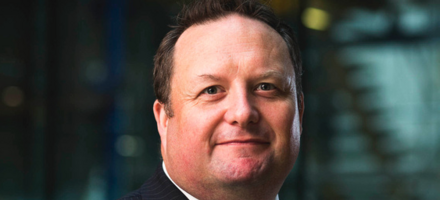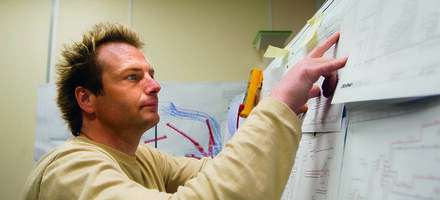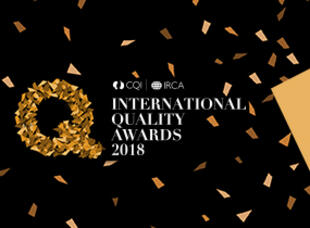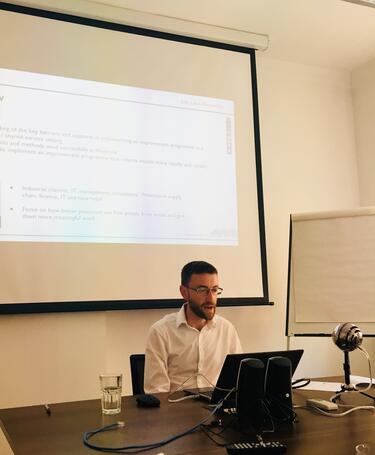
Tried-and-true ingredients for continuous improvement
Progress indicator
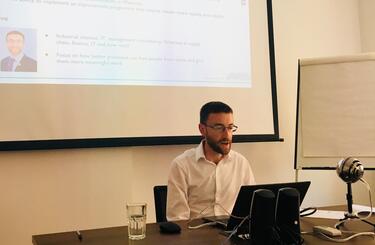
The CQI’s fourth Corporate Connect event of the year, presented by John Lewis Partnership, explored how starting slow can ignite rapid change.
The fourth Corporate Connect event of the year was delivered as a live webinar from the CQI’s headquarters in London on 26 June. During the broadcast, Dave Droar, CQP MCQI, Quality Lead at Waitrose, shared his journey of building a culture of continuous improvement within finance operations at the head office of John Lewis Partnership.
“Process improvement can free people from waste and give them more meaningful work,” said Droar, who has a background in industrial chemistry, IT and management consultancy. “Improvement is vital, but not often visible or glamorous.”
Improvement is also a challenge shared across industries. The 47 participants of the virtual session were asked to rate the level of process maturity at their workplaces. The majority said they have not reached the optimal level of maturity, with 6% saying they were at the initial level (no defined ways of working and teams working in silos), 34% at the repeatable level (ad-hoc, irregular and unplanned activities), 41% at the defined level (training on defined ways of working), 19% at the managed level (compliance measured and effectiveness evaluated), and 0% at the optimised level (ways of working proactively improved).
“Process improvement can free people from waste and give them more meaningful work.”
Droar’s improvement programme ran from 2014 to 2016 and involved 160 partners divided into six teams. The business reaped the benefits in the second year of implementation. The programme created 5% year-over-year savings without the need for redundancy or capital expense, saw a 15% increase in staff engagement, and resulted in saving of 14,000 annualised hours.
Trust in the basics
Basic techniques can contribute to small improvements that add up. Droar emphasised the importance of taking the time to train staff and giving teams a voice. These empower staff to drive improvements independently. The finance teams involved in the improvement programme went through a half-day training course on the eight types of waste (transport, inventory, motion, waiting, over-production, over-processing, defects and skills) and were given a common language to work from.
Training in and use of the fishbone diagram helped the payroll department reduce the 75,000 calls it received regularly. The team found 70 different reasons for the high volume of calls, organised them into themes and prioritised eight actions to address them.
The goldfish bowl method also helps make invisible process and waste, visible. The accountancy and control department made their money transfer process more efficient after identifying waste through the Goldfish bowl method. Droar advised that testing processes by doing them in real life instead of through simulation helps capture the full picture of waste. The accountancy team tested their existing process by transferring £2,000 between John Lewis bank accounts, recorded each step and identified waste. They found that the transfer process involved 42 steps, required several levels of approval and was heavily paper based – the last step involved signing the document and shredding it at the end.
"We often hear about examples of continuous improvement in call centres or manufacturing – this is a Cinderella story for improvement."
Improvement champions are also helpful in implementing a cultural shift. In Droar’s experience, the finance team that completed the most number of improvement actions won an improvement hat. The hat was a source of friendly competition and energised the workplace. It was a simple but effective way to showcase achievements within a department that doesn’t often see their achievements visualised.
Key takeaways
Estelle Clark, the CQI’s Executive Director of Policy, said it was refreshing to see finance operations as a case study. “We often hear about examples of continuous improvement in call centres or manufacturing – this is a Cinderella story for improvement.”
She added that this is “evidence of the power of the people involved in the processes”. Businesses don’t need complex techniques, staff just need to be given the opportunity to express their thoughts.
“At John Lewis, they let the partners speak and [management] listens,” she said.
Claire Gallery-strong, Head of Business Improvement at Sellafield, tuned into the webinar with a team of five. The goldfish bowl method was a key takeaway for her team. “We will be looking at some specific actions to work into our own programme of improvement roll-out,” she said.
“I thought the webinar was very informative and did well to be as interactive as possible,” said Oliver Kinchin, Business Improvement Specialist at Network Rail. “My takeaway quote was ‘go slowly initially to go faster in implementation’.”
Quality World

Get the latest news, interviews and features on quality in our industry leading magazine.
